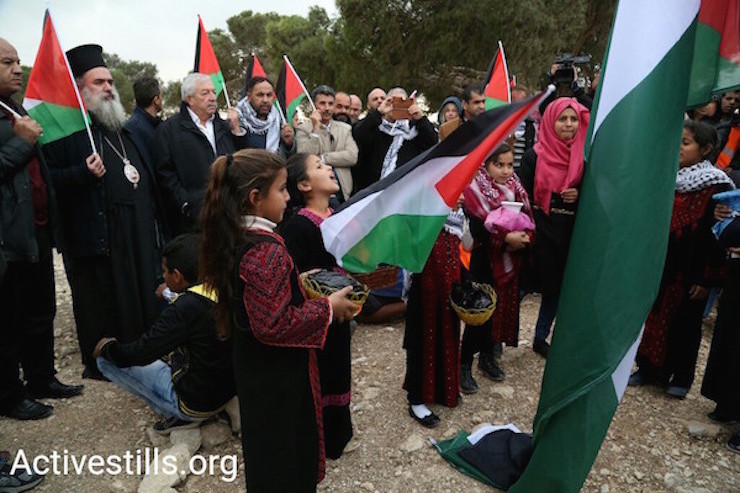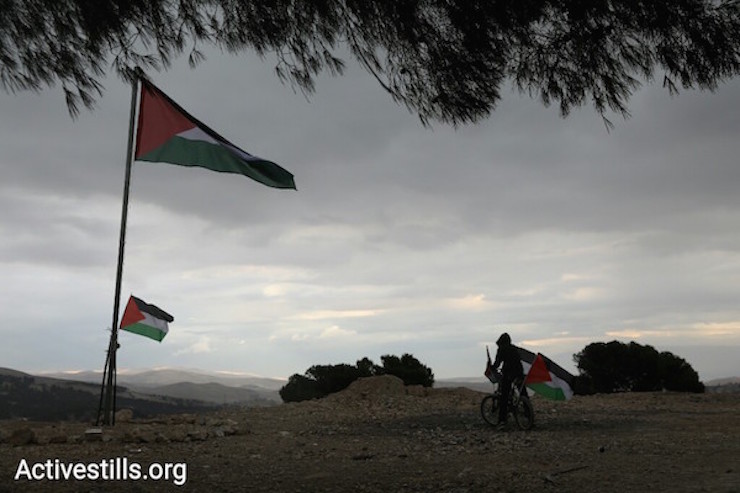The small village is located in E1, an area in which the U.S. and Europe have long demanded Israel not build new settlements, because doing so would cut the West Bank in two.
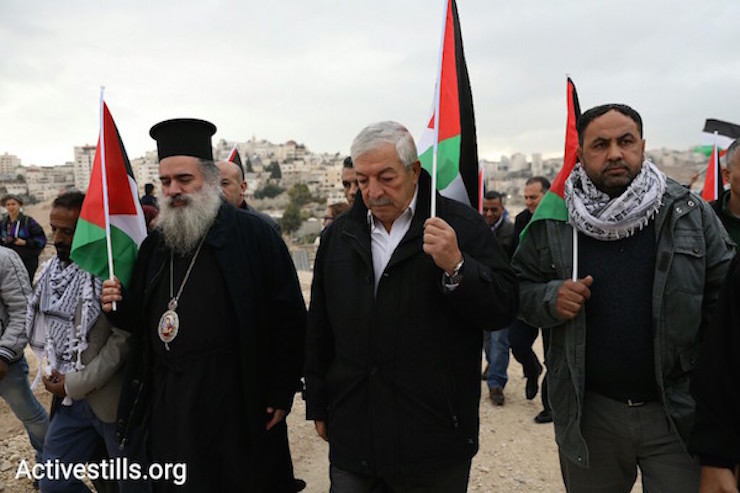
Around 100 demonstrators joined the Palestinian community of Jabal al-Baba on Thursday, November 23, in the E1 area of the West Bank adjacent to the Israeli settlement of Maale Adumim, to protest a new Israeli-military order that would displace the entire community. On November 16, members of the community received the military order to leave their homes and take with them all of their belongings—the first step in the eventual demolition of their homes. Thursday was the day they were supposed to leave, according to the order.
The West Bank area known as E1, where Jabal al-Baba is located, is the site of an Israeli plan to build several thousand settlement housing units. For over a decade the United States and European Union have demanded that Israel halt the project, which would connect annexed East Jerusalem with the settlement of Maaleh Adumim, thereby making a geographically contiguous Palestinian state all-but impossible.
The demonstrators were joined by members of the Palestinian Authority, the popular committees, and Bishop Atallah Hanna of the Greek Orthodox Church. They marched from the village to a nearby hill, surrounded on one side by Jerusalem and the settlement of Maale Adumim on the other, where they placed a Palestinian flag.
The community consists of 60 families, or more than 280 people, 151 of whom are children. Residents of the community, members of the Jahalin Bedouin tribe, released a statement declaring that they do not intend to comply with the military order. They called on the public to support their struggle.
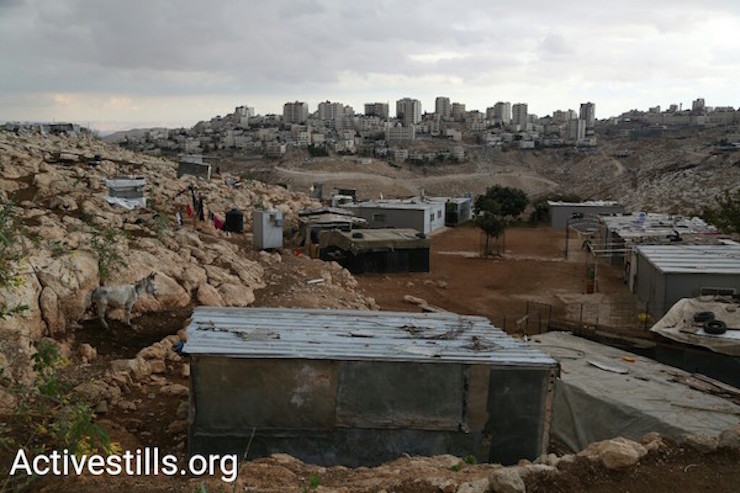
Since the beginning of November, similar evacuation orders have been issued against the villages of Ein al-Hilweh and Umm Jama in the Jordan Valley.
The latest orders are part of a larger trend of evictions and demolition orders issued to Palestinians living in Area C, the 60 percent of the West Bank where the Israeli military controls not only security but also civil matters. Palestinians are prohibited from building on around 70 percent of the land in Area C, most of which is designated for Israeli settlements and military use, and it is virtually impossible for Palestinians to obtain building permits in the remainder of the territory.
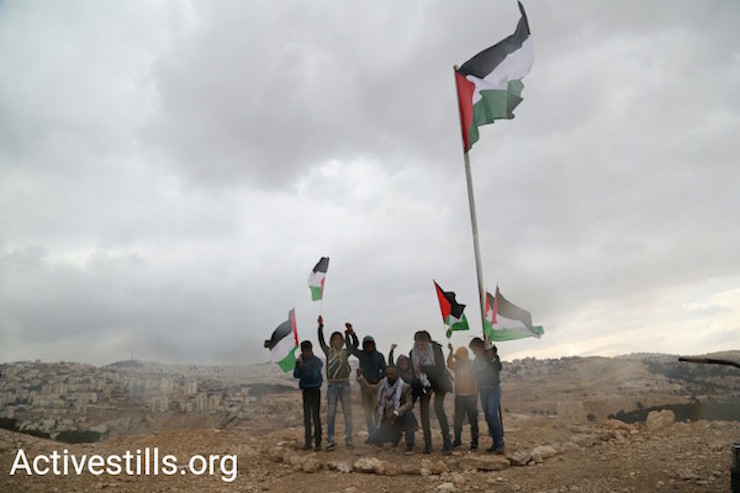
So far in 2017, the Israeli military has demolished 349 Palestinian-owned structures, and displaced 542 people, including 302 children, according to data collected by the UN Office for the Coordination of Humanitarian Affairs.
The Israeli army recently declared plans to demolish one-fifth of the buildings in the Palestinian village of Susiya, located in the South Hebron Hills, within two weeks. “As winter arrives, the imminent demolition will leave 100 people, half of them children, without shelter, said Attorney Quamar Mishriqi-Assad, who is representing the villagers of Susiya.”This is contrary to Israel’s obligations under international law.”
The residents of Susya have for years been fighting in court for the right to stay on their land. The village’s residents were first expelled from their lands in 1986 after the Jewish settlement of Susya was established and an archaeological site built on its former location. The Palestinian villagers then moved the village to their adjacent agricultural lands and have been fighting to subsist there ever since.
The Israeli army has issued repeated demolition orders in the village on the basis of illegal construction and zoning. Residents are currently in the middle of a court process demanding that the army legalize their village.
